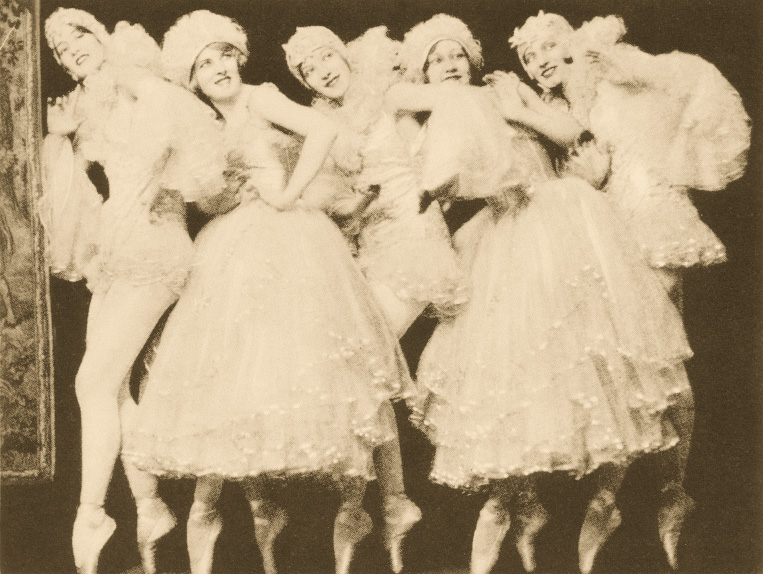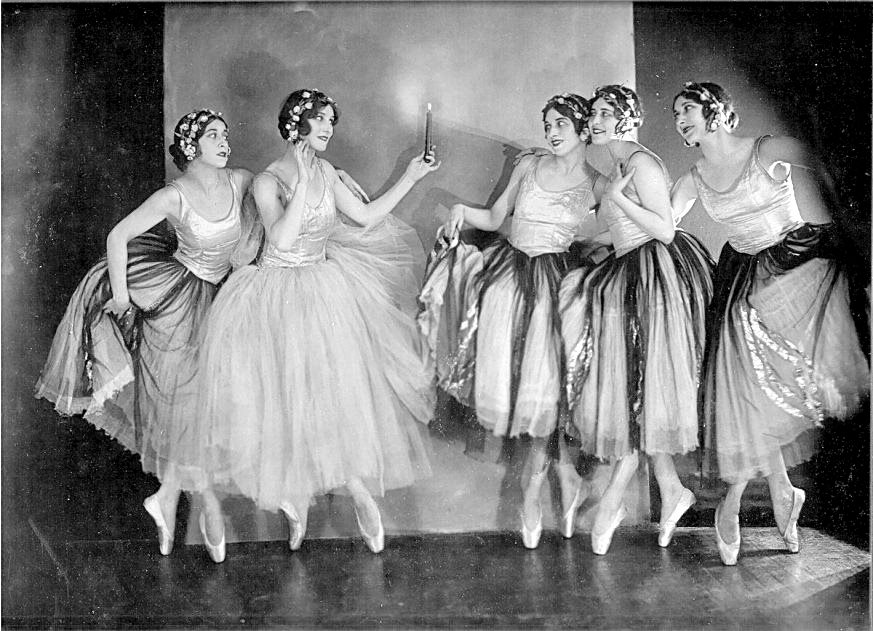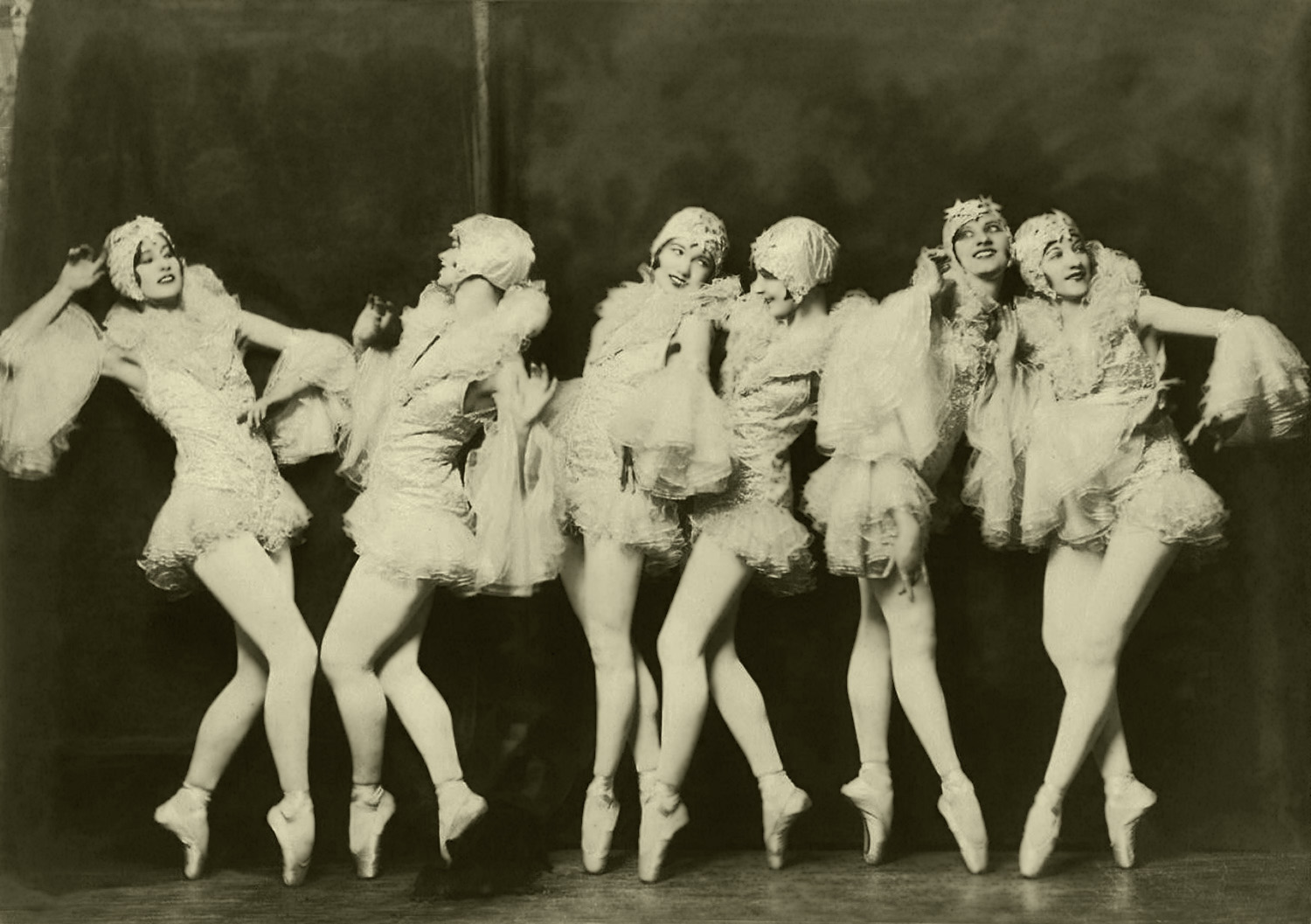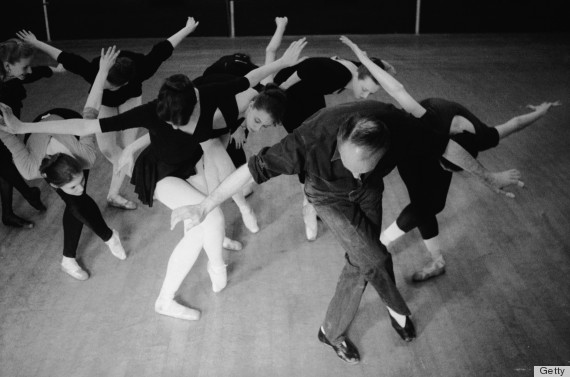
pherank
-
Posts
5,535 -
Joined
-
Last visited
Content Type
Forums
Events
Blogs
Store
Posts posted by pherank
-
-
Oh Pherank, I bet you would like them to come to San Francisco, I would be very envious, much to far for me to come lol. Has Matilde settled in okay, do you see her perform much. I saw her as Olga in Onegin with Mathias Heymann and she was very ggod, it was an Aurelie /Nicholas Le Riche performance. Onegin is in the current season as well. But I have seen it twice 2 years ago at ROH with Alina Cojocaru another fine dancer. Must save my money for other ballets with Aurelie. In some ways I am not sure if she will continue in dance, as she seems to want to have a normal life as a wife and mother. Cannot say as I blame her after all she went into the company at 16 years old.
Mathilde Froustey is just beginning with the company, and this is normally the summer break at SF Ballet, but they are just about to leave for a tour to New York City:
http://www.sfballet.org/tickets/ontour
Froustey dances in Suite en Blanc (not a surprise) and I think 3 other mixed rep ballets, which will all be new for her. We have a forum thread discussing the visit to NYC. So I wish Froustey bonne chance with these new works. Simone Messmer form ABT is also brand new to SFB, and will be danicng in some works for the first time. It should be exciting for the New York audiences. Hopefully the new dancers will have had enough rehearsal time, and feel confident about their roles.
The SFB regular season begins with the Nutcracker in December, so Froustey will need to learn some parts for Helgi Tomasson's version of the ballet - it is a big, beautiful production. I hope she genuinely enjoys being at SFB, and chooses to stay. We shall see!
-
A question to the group: there is original rehearsal footage (from 1947?) of The Four Temperaments showing Mary Ellen Moylan and Tanny Le Clercq, and probably others - Does anyone know who shot this footage, and where it resides these days? Is it in the Jerome Robbins Media LIbrary?
-
Wow - Damian Smith is being listed in some of these performances - and he'll dance in Ghosts with Yuan Yuan again. I guess he wants to ease his way into retirement: a little at a time.
EDIT: according to Leba Hertz, Smith will dance the 2014 season and that will be the actual end of things. So good news for those of us planning on catching these SFB performances.
Lorena Feijoo is now being listed in the programs too.
-
I have read both Kattner-Ulrich's dissertation and Kendall's book and can state that Kattner-Ulrich's work is clear, sober, attributable research which is easy to read and understand. I would read the dissertation FIRST and then enjoy other speculative works for what they are. I guess Kendall was not aware of Kattner-Ulrich's dissertation when she wrote Lost Muse??
I really don't know, DB - I've since returned the book to the library, so can't look through the bibliography. But I'm guessing, no.
I tend to agree that Kattner-Ulrich's dissertation is well done, and easy to read. Aside from a few points I stumbeld over, it is a good compendium of reminiscences from people like Geva, Markova and Danilova.
-
This video is pretty interesting too, and a bit different in manner from the others:
Boy Meets Girl
-
I just found an English translation of the Aquarius song (video above):
Skies and dreams reflecting each other, a red moon appears
The age of AQUARIUS, The age of AQUARIUS
The cogs of the endless stars and the hidden do a lap around the Earth
Buried memories sparkle and recover
An old era completely washed away, wings soar up freely
The age of AQUARIUS
We start to open our eyes to the breath of the age of new light
The age that has been passed down moves, let’s overlap it with secrecy
The future of everything has now begun
Hope starts to sing The age of AQUARIUS
We start to open our eyes to the breath of the age of new light
The age that has been passed down moves, let’s overlap it with secrecy AQUARIUSI love that video - makes me laugh everytime. Especially the part where the woman in the background tries to imitate the band's movements and she starts to fall over. ;)
I also like the "sandwich eating" movement at the very end of the video, after the music has ended. And all the choreography when the band is arrayed on the red carpet - that's just brilliant.
-
Thanks for posting. Very cool movement patterns! If only I knew what they were saying.
I'm not even sure what the titles of the video songs are, but here's a couple samples of lyrics from other songs:
Pushing aside the veil of the world,
we hear two voices:
embellished lies that sound pretty,
and distorted truths that are buried in the crevices.
What is good, and what is bad?
The truth is always a paradox.
As this era comes to its end,
we'll wake up from our slumber.
The galaxy's rhythm is your idealism.
The cycle of dreaming produces a stunning dance.
1, 2, the galaxy's rhythm is your ideal rhythm.
Start dancing in this very moment!
WORLD ORDER
from Machine Civilization
The morning of machine civilization
Red pretext, shadow doubt
clad in mourning clothing of blue.
Ryhtm captured in the morning,
Always the same instant.
Don’t stop the production line.
Something broken,
In the twilight of machinery.
Where’s the world going?
Won’t somebody tell me?
Are these thoughts illusions?
Are we all one?
This world will be changed…?
This heart an illusion?
-
You may be lucky, as Aurelie and her husband Jeremie Belingard have said they would like to move to America, as they loved their time there recently on tour. But they are also not certain of how French people get on there. Seems Aurelie has already asked ABT if she could dance in Manon but they turned her down. (They obviously do not know what they are missing) She does not want to coach or work at POB but would go further a field. Pity she cannot guest at Covent garden, especially as Alina Cojocaru has left to join English National Ballet (what a scoop for them eh?)
I have heard about her interest in ABT, and that seems the most likely place for her to guest. But I'm sure there are many places where she and Belingard could teach, if that is of interest.
I'm happy to have Dupont and Belingard come to San Francisco Ballet, and keep Mathilde Froustey company. ;) (Or maybe Froustey would wonder, "Can't I get away from these people?")
But certainly, London would be a good option for them.
-
Well it was Aurelie's final performance of the Ballet on the 6th October, and she did confess when I went round to see her. that she felt sad. By all accounts on the performance prior to this the 3rd, she was crying at the curtain call's, knowing she had only one more performance to dance. Bless her, she has quite a challenge ahead as the time passes up to her final appearance. .
It's nice to be able to hear from someone who could be there - thanks Nanarina. I have to hope that Dupont is able to come to the US to do some dancing after POB retirement. Who knows what the future will hold?
-
Just because they are so fun to watch: here are World Order from Japan. They have a signature slow motion walk that you will see in most of their videos, but there's also a lot of clever movement with interesting tempo shifts. And they create the music as well.
"For those unfamiliar with World Order, they are a unique Japanese band created in 2009 by former mixed martial artist, Genki Sudo, that incorporate music, slow-motion and classy suits into a pure blend of auditory and visual awesomeness." --William Goodman
"Welcome to Tokyo"
"Aquarius"
-
Here's a few more photos of the Albertina Rasch Dancers. I enjoy the aesthetic of these old photos.
"Albertina Rasch (January 19, 1891 – October 2, 1967) was a naturalized American dancer and choreographer. Born in Vienna in what was then Austria-Hungary in 1891 to a family of Polish Jewish descent, Rasch studied at the Vienna State Opera Ballet school and became leading ballerina at the New York Hippodrome in 1911.
She formed her own dance troupe, The Albertina Rasch Girls, and the Rasch Ballet, starred in a number of Ziegfield productions. She also appeared at the Moulin Rouge, performed with Josephine Baker, toured with Sarah Bernhardt, and opened a Manhattan dance studio (where Bill Robinson taught tap) before adapting her classical training and techniques for the Broadway theatre and films."Another photo by A. C. Johnson

Photograph by Haz, 1931 Ziegfeld Follies

by Florence Vandamm 1927

-
So funny! ^^ They remind me of a flock of birds.

-d-
Hello Diane - "flock of birds" sounds about right. I thought that their poses were the perfect mix of stylization and natural movement.
I went ahead and added the credit information to my original post.
-
Just a reminder that there are great interviews collecting at the Ballet Initiative website. And the interviews can cover a range of topics depending on the interviewee. Christian Cudnik has recently posted parts 1 & 2 of his interview with Jacques d'Amboise. Even if you've read Jacques' autobiography, I think you will find the conversation adds to the story.
http://balletinitiative.com/podcast -
Did Chilgren also play the piano onstage for Mr. B's Davidsbündlertänze?
On the videorecording, at least, the playing is credited to Gordon Boelzner.
Thanks KFW, I think that must be the version I've seen online - from 1980 with Farrell, d'Amboise, Mazzo, Watts, Martins, Von Aroldingen, Luders and Andersen. The video quality is poor and the audio doesn't always seem synced well with the images, but at least almost all of it is there.
-
The piano accompaniment was done by Dianne Chilgren, a stellar pianist who played for NYCB before joining Pacific Northwest Ballet in 1985. Here's an article about her:
http://community.seattletimes.nwsource.com/archive/?date=20030803&slug=behind03
PNB screened documentary footage in which she explained how she had to tweak the timing to reflect the condition of the film.
(sandik: we were typing at the same time
 )
)Did Chilgren also play the piano onstage for Mr. B's Davidsbündlertänze?
-
the complete film of LA VALSE w/ LeClercq is Jessen's work, if mem. serves, and is silent.
You are right, RG - I finally found the link that mentions this material at the NYC Library:
http://www.worldcat.org/title/valse/oclc/438155528
[DVD, transferred from 16mm reversal print via Digital Betacam cassettes]
-
KFW shared this link with me - an interview with Kendall regarding the writing of Balanchine and The Lost Muse. And sure enough, there are many fascinating bits in the interview, not the least of which having to do with the actual process of writing this type of book. The interview only adds to the story, which is part of what makes reading so fun, and so maddening: the process of life just goes on and on, and there's no formal summing up, only more information...
Time Out New York: Did you speak Russian when you interviewed Balanchine, which you talk about in the book’s introduction? [Kendall now speaks Russian fairly fluently]
Elizabeth Kendall: No, I did not. I wish I had. I wish I’d known anything more than I did. With Russians—I’m not sure exactly why—it might be because the language is very much an echo chamber, a sound environment because it’s very inflected. So when you cross over into the language, you’re more inside and away from where you were than with some other languages and you become something else—which you do if you speak any language well. But if you go inside the Russian language, you get welcomed in a way into a secret society that’s kind of large and very local. So I wish I had spoken Russian.Elizabeth Kendall: When you order items [in the Russian archives], there are various catalogs where you find them; when you order, you write down what you need, and you also have to write the theme of your research. And if you change the description of the theme of your research by even one word, all hell breaks loose. So that was my first real archival residency, and I found a lot of stuff. But then I went to the theater museum, which is a museum with exhibitions. And that is a very hip all-women team that was totally welcoming and they were all running around the building trying to figure out with me what these photographs were saying. That was the team where somebody would bring candy, somebody would bring wine, and you would have a tea break and you would sit around the kitchen and talk. What have you found today? It’s very odd because to be an archivist in Russia, you don’t earn very much money, but you’re extremely well educated, and you have a specialty: You’re, like, a Ph.D. in an archive. They’re amazing. The people who run the reading rooms, where you take it to a desk and turn on the little Soviet light—in TsGALI, you write it down by hand, because no photographing and at that time no computers. I would use them, I would say, “I can’t read this handwriting. Would you just tell me what it says?” It took me about two months before I got asked to tea, which is a crossing-over line. In TsGALI, the Soviet one, I was rooting around one day in the various books and I found Vera Kostrovitskaya’s private archives, and that was the greatest find of the whole thing.Time Out New York: Balanchine and Lidia were quite different—he was the dreamer, and she was the extrovert. I love how you say that she was late to everything. You really get at her personality.
Elizabeth Kendall: Before every yoga class when I was really intensely finishing, when I had to dedicate the practice to somebody, I would really say, “Okay Lidia, this is your time—come back.” [Laughs] It really helped. That’s why I don’t like yoga anymore. She’s not there anymore. I tried evoking George, but he doesn’t really need me as much because he’s alive in many people’s minds and hearts.
And here are some wonderful closing lines:Time Out New York: What do you want this book to accomplish?
Elizabeth Kendall: I want the book to allow the ballets to be both the timeless machines of emotion that they are and to be real artifacts rooted in history. I want to work against the ahistorical approach to Balanchine’s art that implies that he was born fully formed out of the head of Zeus. I want him to be thought of as a person. I would like the very particular conditions of his time in history to be known more, because I think they’re very much present in the ballets. I’d like people to continue to be aware of Balanchine—that he shouldn’t dwindle out of existence, that a fresh look means fresh talk and fresh awareness about him and his art. -
I see now that at the end of the sequence that the credits mention piano music being added on later - the original footage was silent (I kind of ignored the credits the first time through).
My understanding is that there is a full version of the ballet somewhere in the Jerome Robbins media library, and I don't think it was recorded at Jacob's Pillow, but elsewhere.
-
According to Mathilde Froustey's Twitter feed, she will dance in Trio at the October 19 matinee, and in Suite en Blanc and From Foreign Lands on the 20th.
That's great news for Abatt. ;)
Froustey dancing Suite en Blanc makes perfect sense - she has to know that one well from the POB. But everything else will take lots of cramming.
-
How did I miss this longer clip of Le Clercq in La Valse posted last May (authorized by the Balanchine Foundation?):
Fantastico! Great find, Neryssa - you get the gold star today. This looks to be the footage that was used in the documentary. The audio sounds like it was added on later - either that, or they went to some trouble to mic the piano in this presentaton footage at Jacob's Pillow, and clean things up.
The first thing I notice is how closely Le Clercq's movements correspond with the movements of the earlier "Three Fates" dance - the sharp/spikey elbows, and jarring movements that succumb to inertia, soften and fade.
When the two partners intertwine arms, the tempo of their movements is quite different from what I've seen in modern versions. Not that one way is necessarily "right", but here we get to see what was first developed with Balanchine presiding over matters. Pretty thrilling, I have to say. I'll have to watch this a number of times and give it more thought...
-

I don't yet know the photographer, but this is one of my personal favorites from the world of dance.
[EDIT: This is a photo of the Albertina Rasch Dancers in costume for Rio Rita (1927). Photographed by Alfred Cheney Johnson.]
-
The Huffington Post article dirac posted in Links today has a Balanchine photo, said to be from 1962, that I don't remember seeing before. Does anyone know the photographer? One ballet photo book I regret not purchasing when I could find a cheaper copy is "Fred Fehl at New York City Ballet." I wonder if this is Fehl's shot.

Name that ballet! Sorry, no prizes. ;)
-
I think it's a mistake to look at Jennifer Homan's book as a textbook kind of history, which implies both impartiality and inclusiveness -- we want to think that the author doesn't have a singular agenda and that they consider multiple points of view in their work. Apollo's Angels is a personal look at history -- in a way, it's like Margot Fonteyn's Magic of Dance (which was also used as a textbook by a few schools). It tells us almost as much about Jennifer Homans as it does about the history of ballet.
"It tells us almost as much about Jennifer Homans as it does about the history of ballet."
Precisely. And I don't actually have a problem with that myself because Homans does explain something of her personal approach/viewpoint in the Introduction. But is that enough? Perhaps not, given the amount of "blowback" that has appeared, especially regarding the closing section of the book. This is a stylistic issue to me, that is certainly fixable in a re-write.
For me, if a book is ultimately successful, it is because I am inspired to learn much more on all the various subjects touched upon. And that in fact happened for me with Homans's book. So I can't say the book was a failure by any means. There is a tremendous amount of information inside, and it is always the reader's job to try to figure out what is plausible and useful, and what is problematic, and open to interpretation (or even factually incorrect). I don't think I understood, for many years, that most people regard whatever non-fiction they happen to be reading (or watching) as a compendium of actual facts. We seem to give these things the benefit of the doubt and assume that all is "true" until we come across something that really rubs our values the wrong way. Then we might start to question matters. In graduate school, I was finally introduced to the notion of a 'critical reader', who plays detective and pieces together some sort of 'truth' from the textual evidence - never assuming the writer to be all knowing and completely trustworthy (or even competent) on all levels. But it is a life's work to get good at playing text detective: you've got to learn about stylistics, grammar, as well as the real world characters and events being referenced.
Mark Franco's criticisms are valid (even though he can sound rather nasty himself in making his points), but the Homans book is still worthy reading, and that's the truly important point.
-
Another thing to think about - the actual pairings. My own preferences tend toward:
Vanessa Zahorian and her husband Davit Karapetyan
Maria Kochetkova and Joan Boada
Sarah Van Patten and Tiit Helimets
Yuan Yuan Tan used to work primarily with Damian Smith (and they were a great team), and Vito Mazzeo I believe, and now that both are retired it's difficult to say who she best pairs with.
I'm also not really able to say who Frances Chung works best with - I think that is still being figured out.But there is something to be said for mixing things up and creating suprise chemistry.

Balanchine & the Lost Muse: Revolution & the Making of a Chore
in Writings on Ballet
Posted
Hi Stage Right - If you read the interview with Kendall mentioned above, I think you will understand better that even Kendall was unsure if the "Lost Muse" notion would work. But she felt that it was worth showing the connections between Ivanova and Balanchine, and letting readers decide for themselves. I tend to agree with you that some of Kendall's assertions go too far, given the evidence, but I appreciated her efforts all the same. It was good of her to celebrate the short life of Lidia Ivanova.
In Alexandra Danilova's autobiography, Choura, she recounts a dream that Balanchine told her about:
'George told me that not long after Lidia was drowned, he saw her in a dream. "I am so lonely," she said, reaching out to me. "I want Choura." "No, no," he said, and he pulled me back, away from her.
We all loved Lidia and were terribly upset at losing her. But it was years before we understood what had gone on; the extent of the tragedy dawned on us only later. In a sense, she was a casualty of the Revolution.'